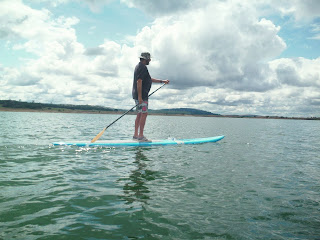The day ended with a Dan Crandall bear story by firelight. We had just gotten off the water after viewing the Perseid Meteor Shower on the lake. The fire was slowly fading and in Dan's story the bear was closing in. Across the glowing embers, I saw other campers melting into their camp chairs as their sleepy eyes and yawns were revealed by the fire's flicker before sinking back into the shadows. Their muscles were stiff and sore from the day's paddling across the lake. Many had already retired to the comfort of their tents, while others put off the inevitable crash into their sleeping bags hoping to make the day last just a bit longer.
"I think a lot of people want to go back to basics sometimes," wrote former Canadian Prime Minister and paddler Pierre Elliott Trudeau in his memoirs, "To get their bearings. For me, a good way to do that is to get into nature by canoe – to take myself as far away as possible from everyday life."
Current Adventures Kayak School and Trips has hosted this two-day overnight one-of-a-kind camping experience in August for almost ten years. During the days, paddlers escape the heat while exploring the pine-scented Loon Lake in the Crystal Basin Recreation Area east of Lake Tahoe, while at night campers are treated to a night-time paddling experience to view the Perseid Meteor Shower. All the meals and paddling gear are provided, freeing kayakers up to only de-stress and unwind in the realm of nature.
"I don't know. I lost count," said Dejaun Archer, when asked how long she has attended these camp outs. "It's probably been about seven or eight trips. I like the group, I like the people. It's just really great. The food is great. The scenery is great. It's just a lot of fun. As long as they keep doing them, I'll keep coming."
Pristine blue water, textured granite shore and clear skies greeted the group of 20, mostly women boaters earlier that day for their first trip on to the lake. I was along for my second year as a guide for the trip but still felt the same thrill as everyone else while lowering the kayaks into the water. While most had paddled a kayak before, with each cast off I sensed their brimming excitement of exploring the unknown. At 6,378 feet, Loon Lake features 10 miles of boulder-lined shoreline with awe-inspiring views of the Sierra Nevada, however, the California drought had taken a toll on the mountain reservoir this year. At about 50 percent of its normal level, the lake's crystal clear water was significantly lower than my last visit. Our usual hidden-away paddling destinations and coves were now parched and dry. The popular visit to the tunnel on the east end of the lake turned into a hike instead of a paddle. Loon Lake paddling veteran Archer didn't let the drought soak up the fun.
"I don't think it (the lake) is any different, but it is lower." said Archer, "We got to walk into the tunnel. I have never done that. I have been here when you couldn't see the tunnel at all. I have been here when the tunnel was very short and you couldn't go in it, and I've been there when we kayaked in it. Now this time we got to walk in it, which I thought was really cool."
The lake might be low, but the trip was full of laughter and springing with new friendships as the boaters paddled along the lake shore. Each paddler shared the enthusiasm of kayaking with one another. Some speeding ahead together, while others hung back embracing the beauty and calm of the day's journey side by side. Dinner and the campfire afterward provided more laughs, some wine, and camaraderie.
"It's a pretty good group," said Current Adventures' Dan Crandall, "Most of them are doing something they have never tried before and enjoyed it. They all came as strangers and are leaving as friends. They will all probably end up paddling together. That's kayaking."
The smoldering embers ignite one last time, while the bear in Dan's story backs off and ambles back into the woods. Above me, the last meteor shoots through the stars perfectly framed by the silhouettes of towering majestic pines. I look into the night sky and ponder Trudeau's profound words...
"A canoeing expedition…involves a starting point rather than a parting. Although it assumes the breaking of ties, its purpose is not to destroy the past, but to lay down a foundation for the future. From now on, every living act will be built on this step, which will serve as a base long after the return of the expedition…. and until the next one."


























